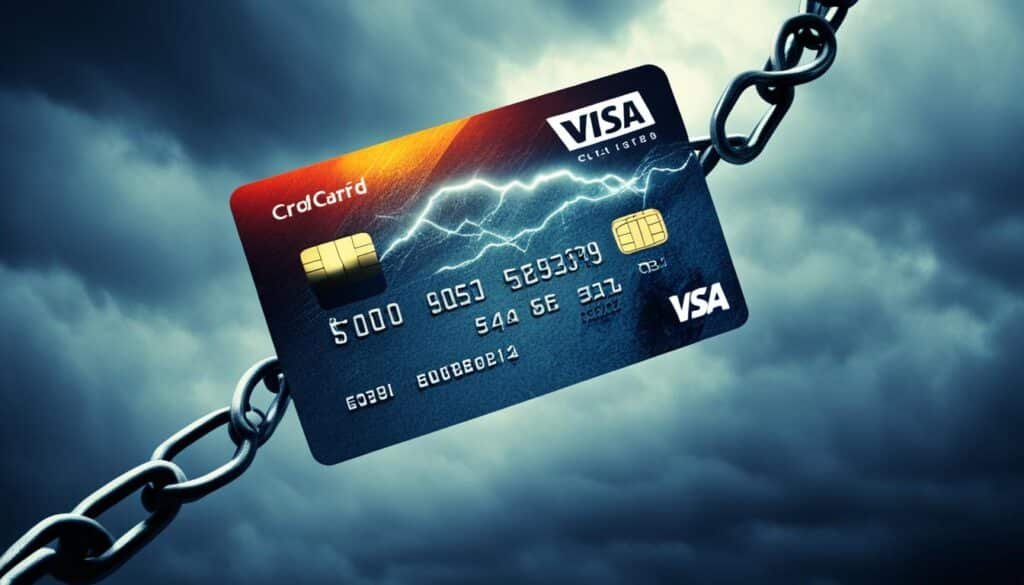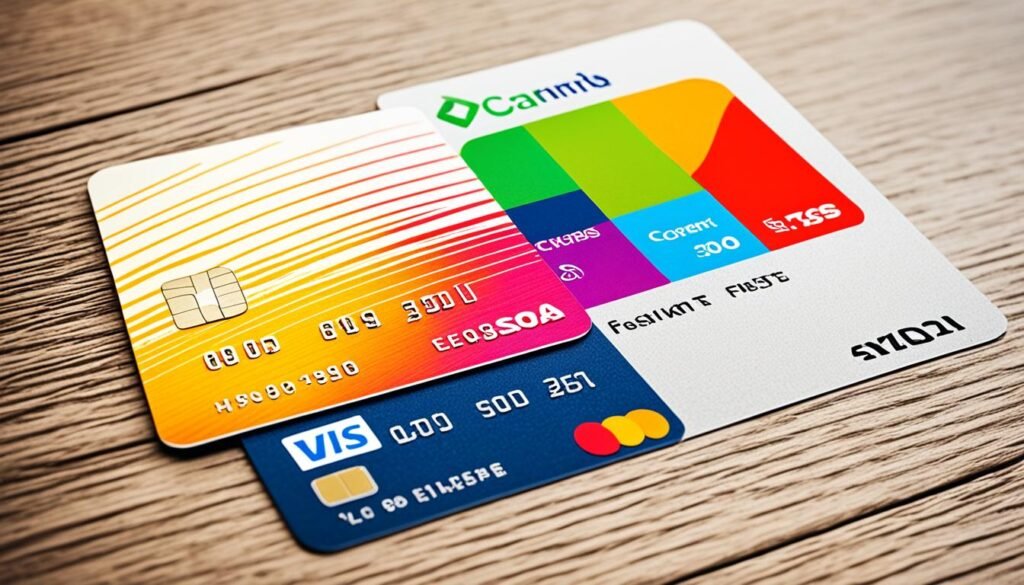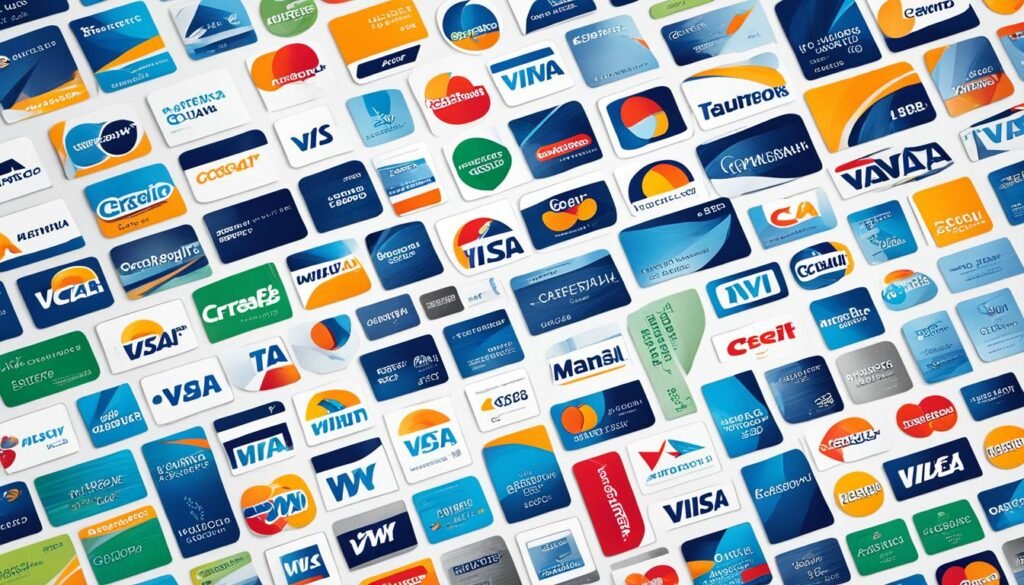Credit card companies operate on a business model that allows them to generate revenue in various ways. Understanding how these companies earn money can help cardholders make informed financial decisions. Let’s explore the different income streams that credit card companies rely on.
First and foremost, credit card companies earn money through fees. These fees include annual fees, cash advance fees, balance transfer fees, and late fees. Cardholders may incur these fees for specific actions or circumstances related to their credit card usage.
Credit card companies also earn revenue through interest charges. When cardholders carry a balance beyond the grace period, interest charges are applied to the outstanding amount. This interest is typically calculated based on the Annual Percentage Rate (APR) associated with the credit card.
Another significant source of income for credit card companies is interchange fees. These fees are charged to merchants for each credit card transaction they accept. The fees cover various costs associated with payment processing, including fraud protection and communication.
It’s important to note that credit card companies consist of both issuers and networks. Issuers, such as banks and credit unions, provide credit cards to consumers and manage the credit card accounts. Networks, such as Visa and Mastercard, facilitate the processing and authorization of credit card transactions.
Key Takeaways :
- Credit card companies generate revenue through fees, interest charges, and interchange fees.
- Fees include annual fees, cash advance fees, balance transfer fees, and late fees.
- Interest charges accrue when cardholders carry a balance from month to month.
- Interchange fees are paid by merchants for accepting credit cards as payment.
- Credit card companies consist of issuers and networks.
How Credit Card Companies Work
Credit card companies operate through a combination of issuers and networks. Issuers, such as banks and credit unions, play a crucial role in lending money to cardholders when they use their credit cards. These issuers evaluate the creditworthiness of applicants and determine the terms and conditions of the credit cards they offer.
Furthermore, retail credit cards are often issued by a bank under a contract with a specific retailer. These co-branded credit cards provide cardholders with exclusive benefits and rewards when making purchases at the designated retailer.
Also Read : Pathways To Prosperity: Building Your Success In Medical Careers
On the other hand, networks like Visa and Mastercard are responsible for processing credit card transactions. They ensure the seamless flow of funds between the cardholder’s account and the merchant’s account. Networks also play a vital role in attributing transactions to the appropriate cardholders, maintaining the integrity and security of the payment system.
It’s important to note that some companies, such as American Express and Discover, serve as both networks and issuers. They have their own payment networks and issue credit cards directly to customers.
“Credit card companies consist of two main components: issuers and networks. Issuers lend money to cardholders, while networks process transactions and ensure proper attribution. Retail credit cards are issued under contracts with specific retailers. American Express and Discover serve as both networks and issuers.”
Understanding the functioning of credit card companies can help consumers navigate the borrowing money landscape effectively. By recognizing the roles of issuers and networks, individuals can choose credit cards that align with their financial goals and spending habits.
Also Read : From Campus To Career: How Trine University Prepares Students For Success
Co-Branded Credit Cards and Partnerships
Co-branded credit cards are a popular type of credit card that involves partnerships between credit card companies, issuers, and retailers. These cards offer unique benefits and rewards tailored to specific retailers or brands. Cardholders can enjoy perks such as discounts, cashback, or exclusive access to events and promotions.
Co-branded credit cards create a mutually beneficial relationship between the credit card company, issuer, and retailer. The credit card company gains access to a loyal customer base through the retailer, while the retailer benefits from increased customer spending and brand loyalty. Cardholders can take advantage of the rewards and benefits associated with their favorite retailers or brands.
How Credit Card Companies Make Money
Credit card companies earn revenue through various sources. While issuers charge interest on borrowed money, networks collect fees from merchants for processing credit card transactions. Additionally, credit card companies generate income through late fees, annual fees, balance transfer fees, and interchange fees paid by merchants.
Also Read : Breaking Barriers To Better Health: Accessible Medical Treatments
It’s important for cardholders to understand the revenue sources of credit card companies to make informed decisions about their credit usage and to effectively manage their finances.
https://www.youtube.com/watch?v=fhHQDiPFEwY
| Credit Card Companies | Revenue Sources |
|---|---|
| Issuers | – Interest charges – Late fees – Annual fees – Balance transfer fees |
| Networks | – Interchange fees – Transaction processing fees |
Where the Money Comes From
Credit card companies rely on various sources of revenue to sustain their operations and generate profits. Understanding these sources is crucial for cardholders to make informed decisions and manage their finances effectively.
Interest Charges:
One of the primary sources of revenue for credit card companies is interest charges. When cardholders carry a balance from month to month, they are charged interest on the outstanding amount. This interest is typically calculated as an annual percentage rate (APR) and can vary based on factors such as creditworthiness and the type of credit card. Mass-market issuers, especially, derive a significant portion of their revenue from interest charges.
Fees:
Credit card companies also earn revenue through a variety of fees charged to cardholders. These fees can include annual fees, cash advance fees, balance transfer fees, and late payment fees, among others. Annual fees are typically associated with premium reward credit cards, while cash advance fees apply when cardholders use their credit cards to withdraw cash. Balance transfer fees are charged when cardholders transfer debt from one credit card to another. Late payment fees are assessed when cardholders fail to make the minimum payment by the due date. These fees contribute to the overall revenue stream of credit card companies.
Also Read : Empowering Dreams: Lewis University Commitment To Student Success
Interchange Fees:
Another significant source of revenue for credit card companies is interchange fees. These fees are paid by merchants to credit card companies for accepting credit card payments. They cover the cost of payment processing, communication, and fraud prevention services provided by the credit card companies and their payment networks. Interchange fees are typically a percentage of the transaction value and are set by the payment networks, such as Visa, Mastercard, and American Express. The specific fee rate varies based on factors such as transaction volume and value, but they contribute a substantial amount to the revenue of credit card companies.
Transaction Fees:
A lesser-known source of revenue for credit card companies is transaction fees. These fees are charged to merchants for processing credit card transactions and can vary based on factors such as the size and type of transaction. While interchange fees are paid by merchants, transaction fees may be charged directly by the credit card companies themselves as an additional revenue stream.
By diversifying their revenue sources, credit card companies create income streams that allow them to sustain their operations, offer rewards and benefits to cardholders, and invest in product innovation and technology.
Maximizing Credit Card Revenue Sources
“By strategically managing interest charges, fees, interchange fees, and transaction fees, credit card companies can optimize their revenue sources while providing value to both cardholders and merchants.”
To minimize costs and maximize benefits, cardholders should pay their balances in full each month to avoid interest charges. They should also be mindful of any applicable fees, choosing credit cards with lower or no fees that align with their financial needs and spending habits. Additionally, understanding the role of interchange fees and their impact on merchant costs can help cardholders make informed decisions when selecting payment options.
Also Read : Your Health, Our Priority: A Comprehensive Guide To Medical Services
Ultimately, the revenue generated by credit card companies is essential for their continued operations and the provision of rewards, benefits, and services to cardholders. By understanding where this money comes from, individuals can make informed financial decisions and manage their credit card usage responsibly.
| Revenue Source | Description |
|---|---|
| Interest Charges | Revenue generated from charging cardholders interest on their outstanding balances. |
| Fees | Revenue generated from various fees charged to cardholders, such as annual fees, cash advance fees, balance transfer fees, and late payment fees. |
| Interchange Fees | Revenue generated from fees paid by merchants for accepting credit card payments, covering processing and fraud prevention costs. |
| Transaction Fees | Revenue generated from fees charged to merchants for processing credit card transactions. |

Credit Card Interest
When it comes to borrowing money through credit cards, understanding the concept of interest charges is crucial. Interest charges are the fees imposed by credit card issuers on the outstanding balance carried from one month to the next. These charges contribute significantly to the revenue of credit card companies.
The interest rate associated with credit cards is commonly referred to as the Annual Percentage Rate (APR). The APR can vary based on factors such as the cardholder’s creditworthiness and the specific type of credit card. Currently, the average credit card interest rates in the United States exceed 20%, making it essential to be mindful of these charges to avoid falling into credit card debt.
To avoid interest charges altogether, it is advisable to pay off the credit card balance in full each month. This responsible approach helps cardholders manage their finances effectively and prevents unnecessary expenses related to interest charges.

Credit Card Fees
Credit card companies charge various fees that contribute to their income. It’s important for cardholders to understand these fees and how to manage them effectively to minimize costs.
Annual Fees
Annual fees are common on high-reward credit cards and those designed for individuals with less-than-good credit. These fees are charged once a year simply for the privilege of having the card. While some cards offer valuable benefits and rewards that may justify the annual fee, it’s important to consider whether the benefits outweigh the cost.
Cash Advance Fees
Cash advance fees apply when cardholders use their credit cards to get cash at an ATM. This convenience comes at a cost, with fees typically ranging from 2% to 5% of the total amount withdrawn. Additionally, cash advances often accrue interest charges immediately, so it’s important to understand the terms and costs associated with this type of transaction.
Balance Transfer Fees
Balance transfer fees are charged when cardholders transfer their existing credit card debt to a new card. These fees are typically a percentage of the amount transferred, typically ranging from 3% to 5% of the balance. While balance transfers can be a useful strategy for consolidating debt and potentially saving on interest charges, it’s important to consider the costs associated with the transfer.
Late Fees
Late fees are applied when the minimum payment is not made by the due date. These fees can range from around $25 to $40 and can quickly add up if cardholders consistently miss payments. Setting up payment reminders or using autopay can help avoid late fees and ensure payments are made on time.
Understanding and managing these fees is crucial for minimizing costs and maximizing the benefits of a credit card. By paying on time, avoiding cash advances whenever possible, and choosing cards with no annual fees or low balance transfer fees, cardholders can keep their costs under control.
| Fees | Description |
|---|---|
| Annual Fees | Charged once a year for the privilege of having the card |
| Cash Advance Fees | Applied when cardholders get cash at an ATM using their credit card |
| Balance Transfer Fees | Charged when cardholders transfer their existing credit card debt to a new card |
| Late Fees | Applied when the minimum payment is not made by the due date |
Interchange Fees
Interchange fees are an essential component of credit card companies’ revenue streams. These fees are paid by merchants to credit card companies for processing credit card transactions, covering the costs associated with communication, fraud checks, and payment processing.
“Interchange fees play a crucial role in the credit card industry. They enable seamless transactions and provide necessary financial support for maintaining payment networks,” says Sarah Johnson, a financial expert.
The interchange fees are typically a percentage of the transaction value, ranging from 1% to 3%, depending on factors such as the volume and value of transactions. Payment networks like Visa and Mastercard set the specific fees.
“Interchange fees are calculated based on various factors, including the level of risk involved, the type of card, and the industry sector,” explains Mark Roberts, a payments consultant.
For credit card companies, interchange fees serve as a significant revenue source. By leveraging their extensive networks and efficient payment processing systems, credit card companies are able to earn substantial income through these fees.
| Payment Network | Interchange Fee Range |
|---|---|
| Visa | 1.15% – 2.65% |
| Mastercard | 1.25% – 2.95% |
“Payment networks carefully analyze transaction volumes, industry trends, and risk factors to set interchange fees that are fair and conducive to maintaining a sustainable credit card ecosystem,”
Interchange fees play a vital role in supporting the smooth operation of credit card networks and ensuring that merchants can accept payments from customers using credit cards. These fees, while contributing to credit card companies’ revenue, also help cover the costs associated with maintaining secure and efficient payment processing systems.
Understanding the mechanics of interchange fees provides insight into the complex financial ecosystem of credit card companies.
How to Minimize Credit Card Costs
When it comes to credit cards, minimizing costs is crucial. By adopting responsible card use and comparing card features, you can minimize fees and avoid interest charges, ultimately saving money. Here are some effective strategies to help you minimize credit card costs:
Paying Your Balance in Full Each Month
One of the most effective ways to minimize credit card costs is by paying your balance in full every month. By doing so, you can avoid interest charges altogether. Interest charges can accumulate quickly and significantly contribute to your overall expenses. By paying in full, you can maintain responsible card use and avoid unnecessary fees.
Setting Up Payment Reminders and Using Autopay
Avoiding late fees is another crucial aspect of minimizing credit card costs. Late fees can add up, especially if you frequently forget payment due dates. To prevent this, consider setting up payment reminders or using autopay. These features can help you stay on top of your payments and ensure they are made on time, reducing the likelihood of incurring late fees.
Choosing Cards with No Annual Fees or Balance Transfer Fees
When selecting a credit card, carefully review the terms and conditions, paying attention to any associated fees. Opting for a card with no annual fees or balance transfer fees can significantly minimize costs. Annual fees can typically range from $50 to several hundred dollars, while balance transfer fees typically range from 3% to 5% of the transferred amount. By choosing cards without these fees, you can avoid unnecessary expenses.
Understanding Card Terms and Comparing Features
To make cost-effective choices, it’s important to understand the terms and conditions of your credit card thoroughly. Take the time to review the details, including interest rates, fees, rewards programs, and any promotional offers. Compare various credit card features and benefits to find the best fit for your needs. By understanding the nuances of your credit card, you can optimize its usage and minimize costs.

Comparing card features is an essential step in minimizing credit card costs. Analyzing the different offerings can help you identify cards with lower fees, favorable interest rates, and valuable rewards. It is important to compare the unique features of each card, including cashback programs, travel rewards, and introductory APR rates. By considering your spending habits and financial goals, you can choose a credit card that aligns with your needs while minimizing costs.
In conclusion, minimizing credit card costs requires responsible card use and informed decision-making. By paying your balance in full, avoiding late fees, choosing cards with no annual or balance transfer fees, and comparing card features, you can effectively reduce expenses and optimize your credit card usage.
Different Types of Credit Card Companies
Credit card companies play a crucial role in the financial industry, providing individuals with the convenience of making purchases and managing their money. These companies can be categorized into two main types: credit card issuers and credit card networks.
Credit Card Issuers
Credit card issuers are typically banks and credit unions that lend money to cardholders when they use their credit cards. These institutions assess an individual’s creditworthiness before approving a credit card application. Once approved, cardholders can borrow money up to a predetermined credit limit and are required to repay the borrowed amount, typically with interest. Issuers charge fees, such as annual fees and late fees, which contribute to their revenue.
Credit Card Networks
Credit card networks are companies that manage transactions between credit card issuers and merchants. These networks facilitate the authorization, processing, and settlement of credit card transactions. They ensure that the funds from the cardholder’s account are transferred to the merchant’s account in a secure and efficient manner. Credit card networks, like Visa and Mastercard, create and manage virtual networks that enable payment processing across different financial institutions and merchants.
Some credit card companies, such as American Express and Discover, serve as both issuers and networks. These companies issue credit cards and also have their own payment networks, offering a comprehensive suite of services to cardholders and merchants.
To better understand the relationship between credit card issuers and networks, consider the following analogy: Issuers are like lenders who provide individuals with credit, while networks act as intermediaries that facilitate the movement of funds between the borrower (cardholder) and the merchant.
By working in tandem, credit card issuers and networks ensure smooth and secure transactions, making credit card payments a convenient and widely accepted form of payment for consumers and businesses alike.

Ways Credit Card Companies Make Money
Credit card companies generate income through three main sources: interest charges, fees, and interchange fees. These income streams contribute to their profitability.
Interest Charges
One way credit card companies make money is through interest charges. When cardholders carry a balance from month to month, they accrue interest on the outstanding amount. This income stream is significant, especially considering the high levels of consumer debt.
Fees
Credit card companies also earn money through various fees. These fees include annual fees, cash advance fees, and late fees. Annual fees are charges that are applied on a yearly basis for card membership. Cash advance fees are incurred when cardholders use their credit cards to withdraw cash. Late fees are applied when the minimum payment is not made by the due date. These fees contribute to the revenue generated by credit card companies.
Interchange Fees
Another income stream for credit card companies is interchange fees. Merchants pay these fees to credit card companies for accepting credit cards as a form of payment. The fees are typically a percentage of the transaction value and are set by payment networks. Interchange fees are an important component of credit card companies’ revenue.
In conclusion, credit card companies generate money through interest charges, fees, and interchange fees. These income streams enable them to operate profitably in the credit card industry.
How to Cut Credit Card Costs
When it comes to credit card costs, there are several strategies cardholders can employ to reduce expenses and save money. By implementing responsible credit card practices and being mindful of the fees associated with credit cards, it is possible to minimize costs and make the most of your financial resources.
Avoid Fees
Fees can quickly add up and significantly impact your overall credit card costs. To avoid unnecessary fees, such as cash advance fees or foreign transaction fees, it is important to familiarize yourself with the terms and conditions of your credit card. By understanding the specific fees associated with your card, you can take steps to avoid them and keep your expenses in check.
Pay off Balance in Full
One of the most effective ways to cut credit card costs is to pay off your balance in full each month. By doing so, you can avoid accruing interest charges on your outstanding balance. Paying off your balance in full not only reduces your overall expenses but also helps you maintain responsible credit card use. It is a good practice to review your credit card statement regularly and make timely payments to avoid interest charges.
Choose No Annual Fee Cards
Another way to minimize credit card costs is to choose credit cards with no annual fees. Annual fees are recurring charges imposed by some credit card issuers, typically for premium cards that offer additional perks and benefits. By opting for no annual fee cards, you can avoid this additional expense and keep your overall costs down.
“By implementing responsible credit card practices and being mindful of the fees associated with credit cards, it is possible to minimize costs and make the most of your financial resources.”
Here is an example of credit cards with no annual fees, worth considering:
| Credit Card | Annual Fee | Rewards |
|---|---|---|
| Discover it® Cash Back | $0 | 5% cash back on rotating categories |
| Chase Freedom Unlimited® | $0 | Unlimited 1.5% cash back on all purchases |
| Citi® Double Cash Card | $0 | 2% cash back on every purchase (1% when you buy, 1% when you pay) |
Choosing a credit card with no annual fee allows you to enjoy the benefits of credit card usage without incurring additional costs. Always compare the features and rewards offered by different cards to find the one that best suits your financial needs.
By following these tips and practicing responsible credit card use, you can successfully cut credit card costs and make the most of your financial resources.
Maximizing Credit Card Benefits
When it comes to credit cards, understanding the perks, rewards, and features offered by your card can make a significant difference in maximizing the benefits you receive. By choosing a card that aligns with your spending habits and financial goals, you can unlock valuable rewards and enjoy additional perks. However, it’s essential to practice responsible credit card use to make the most of these benefits.
One of the key ways to maximize credit card benefits is by paying off your balances in full and on time each month. By doing so, you can avoid interest charges and ensure that the rewards you earn outweigh any costs you may incur. Responsible credit card use goes hand in hand with reaping the benefits.
Before applying for a credit card, consider the features it offers and how they align with your lifestyle. Some cards may offer cashback rewards, while others may provide travel miles or points that can be redeemed for flights, hotel stays, or other travel-related expenses. Take the time to review the rewards structure and determine which features will benefit you the most.
Furthermore, some credit cards may offer additional perks such as airport lounge access, concierge services, or travel insurance. These features can enhance your overall experience and provide added value. It’s important to assess your needs and preferences to choose a card that offers desirable perks.
By maximizing credit card benefits through responsible usage and thoughtful selection, you can make the most of your credit cards. Whether it’s earning cash back on everyday purchases or enjoying travel rewards, understanding the perks, rewards, and features of your card can put you on a path to financial success.
| Perks | Rewards | Features |
|---|---|---|
| Reward points for every dollar spent | Cash back on eligible purchases | Airport lounge access |
| Travel insurance coverage | Miles for flights and hotel stays | Concierge services |
| Extended warranty protection | Statement credits for dining and groceries | Exclusive shopping discounts |
Also Read : How Do Finance Charges Affect My Credit Score?
Conclusion
Credit card companies generate revenue through various sources, including interest charges, fees, and interchange fees. These revenue sources are vital for the sustainability and profitability of credit card companies. By understanding these revenue sources, cardholders can make informed choices to minimize costs and manage their finances effectively.
To minimize costs, responsible card use is key. Cardholders should aim to pay off their balance each month to avoid accruing interest charges. By doing so, they can prevent unnecessary fees and reduce their overall credit card expenses. Additionally, being aware of credit card fees and choosing cards with no annual fees or low fees can help save money.
Overall, responsible card use and cost-minimization strategies are essential for individuals seeking to maximize the benefits of credit cards while minimizing financial strain. By understanding credit card companies’ revenue sources and making informed choices, cardholders can make the most of their credit card experience, enjoying the convenience and rewards without incurring unnecessary costs.
FAQs
Q: How do credit card companies earn money?
A: Credit card companies earn money through various fees such as annual fees, interest charges on balances, interchange fees from merchants, and fees charged to cardholders for specific transactions.
Q: Can I make money from home?
A: Yes, there are various ways to make money from home such as freelancing, taking online surveys, affiliate marketing, virtual assisting, freelance writing, and more.
Q: How can I start making money online?
A: You can start making money online by exploring opportunities like freelance work, online surveys, setting up an online store, affiliate marketing, or offering services on platforms like Upwork or Fiverr.
Q: What are some ways to make money online?
A: Some ways to make money online include freelance work, taking online surveys, affiliate marketing, selling products or services, participating in online marketplaces, and monetizing your online presence through various methods.
Q: How can I make money fast?
A: Making money fast can be achieved through options like completing online tasks, offering services or products with quick turnaround times, participating in paid surveys, or freelancing in high-demand areas.
Q: Can I earn money by watching videos online?
A: Some platforms offer opportunities to earn money by watching videos online, where you can earn rewards or cash in exchange for viewing and engaging with content.
Q: What are some legitimate ways to make extra money?
A: Legitimate ways to make extra money include taking on part-time work, freelancing, offering services online, participating in paid surveys, selling items online, or investing in side hustles.
Q: How can I monetize my online presence?
A: You can monetize your online presence by partnering with brands for sponsored content, offering affiliate marketing opportunities, setting up an online store, providing services or content for a fee, or engaging in online advertising.
Source Links
- https://time.com/personal-finance/article/how-credit-card-companies-make-money/
- https://www.nerdwallet.com/article/credit-cards/credit-card-companies-money
- https://www.bankrate.com/finance/credit-cards/credit-card-companies-make-money/





